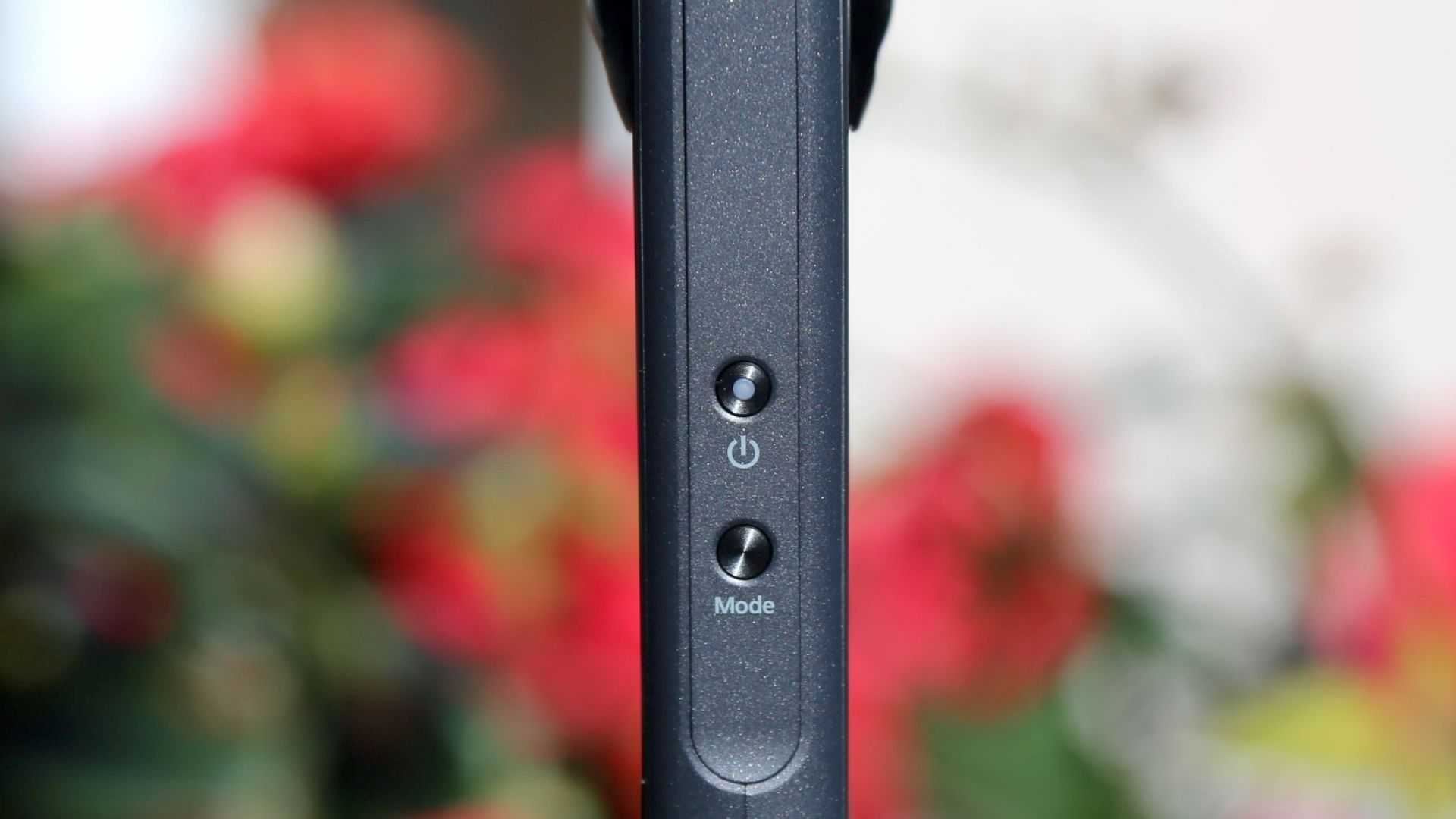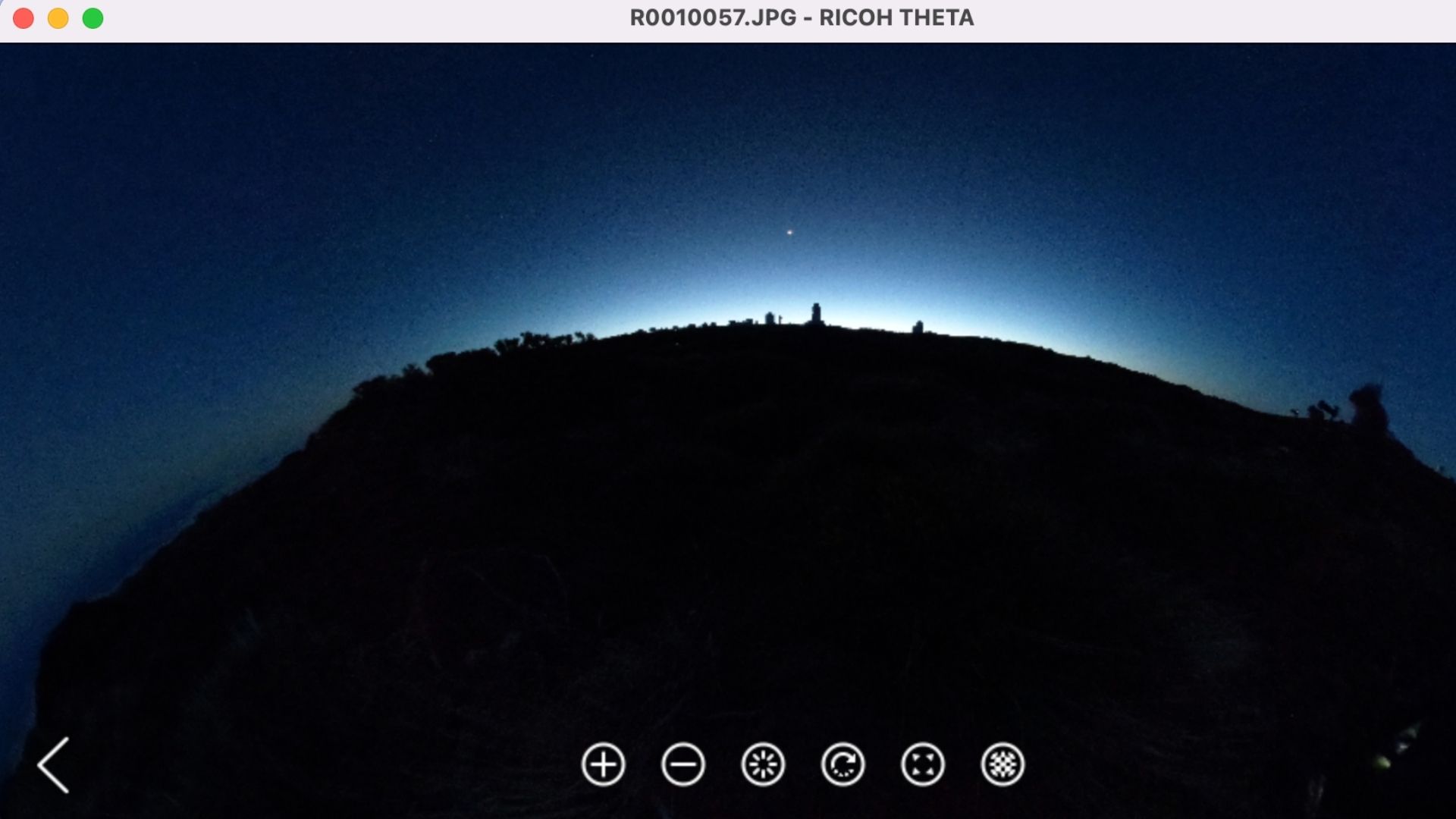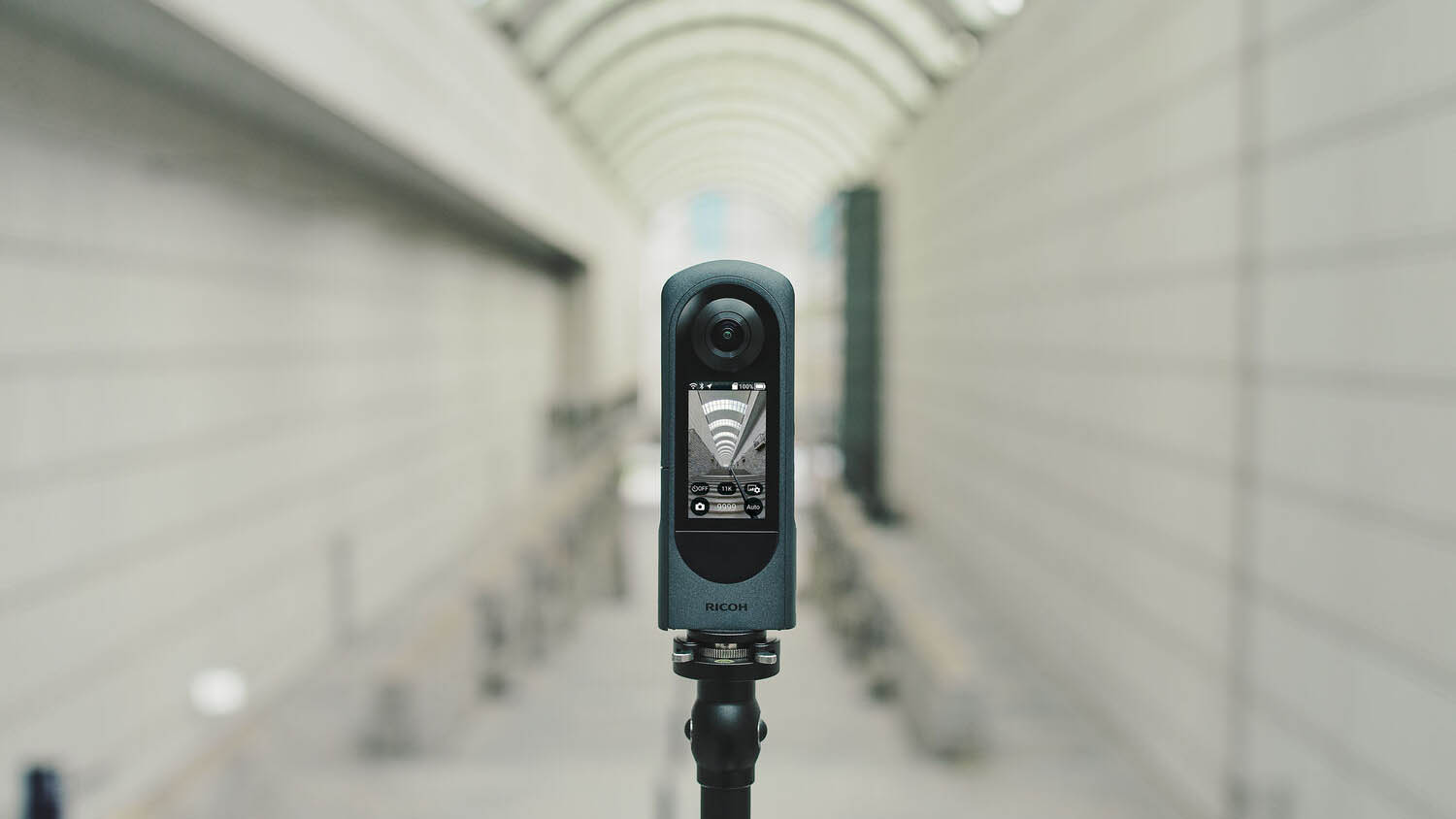Digital Camera World Verdict
An easy to use and versatile step-up 360º camera with lots of practical features (though not RAW capture), the Ricoh Theta X’s large sensor means 60.5MP stills and 5.7K 360º video with image stabilization, though the highlight is its ability to easily remove a person from content.
Pros
- +
2.25 inch colour touchscreen
- +
60.5 megapixel still images
- +
Low light performance
- +
Manual exposure and bracketing
- +
‘Time Shift’ disappear from photos
Cons
- -
Can’t capture in RAW
- -
Visible stitching lines
- -
Very short battery life
- -
No external microphone option
Why you can trust Digital Camera World
When the Ricoh Theta first hit the shelves in 2013 it was the very first consumer 360° camera. Since then the likes of Insta360 and even GoPro have got involved in the spherical format. Can Ricoh reach the high standards of its rivals with its latest attempt?
Absolutely. The Ricoh Theta X does something that not even the best 360 cameras achieve by offering 11K stills resolution, which is 60.5MP. If there’s something that all 360° cameras have lacked in the last decade it's resolution, with spherical images largely failing to impress when judged purely on detail.
The Ricoh Theta X attempts to go one better by shooting 5.7K 30fps 360º video with image stabilization (IS). It does that using its twin fisheye lenses, whose separate images are stitched together in real-time.
Add ‘Time Shift’ that can magically remove a person from 360º photos and videos and we have a groundbreaking product – though there are some significant drawbacks you should know about the Ricoh Theta X before you invest…





Ricoh Theta X: Specifications
Aperture: f/2.4
Focal length: 7.2mm (35mm equivalent)
Photo resolution: 11008 x 5504
Video resolution: 5760 x 2880 at 30fps, 3840 x 1920 at 60fps
ISO range: 50-3200
Run time: 30 minutes
Weight: 170g
Dimensions: 136.2x51.7x29mm
Ricoh Theta X: Key features
The headline act on the Ricoh Theta X is undoubtedly its ability to shoot 5.7K 30fps 360° videos with image stabilization, and purportedly without stitching (more on that below).
More interesting to photographers and anyone wanting to create immersive 360º photos is its ability to shoot still images 11,008 x 5,504 pixels. That’s 11K resolution or 60.5 megapixels. For 360º cameras that’s a game-changer.
The best camera deals, reviews, product advice, and unmissable photography news, direct to your inbox!
It does that thanks to twin 48mp Sony IMX586 1/2-inch sensors and a Qualcomm QCS605 chip, which is a significant step-up compared to most 360º cameras. However, not being able to capture in RAW is a shame for such a high quality camera.
One of the other major issues with 360° cameras is that the content creator struggles to themselves get out of the image. Cue ‘Time Shift’ on the Theta X, which works when you put the camera on a tripod (there’s a 1/4-inch tripod thread on its underside) or on a flat surface and let it take two photos.
All you have to do is make sure you’re in a slightly different position in each photo and the Theta X will then layer one photo on top of another and remove you completely using its face recognition tech. It works flawlessly – and it even removes your shadows, too.
Ricoh Theta X: Build and handling
In a first for a 360 camera from Ricoh, the Theta X uses an interchangeable battery. In the box is a separate Ricoh DB-110 1,350mAh battery and a separate battery charger that can be used with any USB-C cable. That’s going to be useful if you’re planning a long shoot since you can either have a pocketful of spare batteries or charge them up as you go using a portable battery. Available separately specifically for the Theta X is a TL-3 lens cap and a TD-2 tripod.
There’s also a microSD card slot in the battery compartment, though as standard the Theta X has 64 GB of built-in storage, which is handy. That’s enough for about an hour of 5.7K 30fps 360º video.
Two apps form a key part of the Theta X experience. The Theta app controls the camera and puts a live preview on your phone as well as giving access to all the settings. The Theta+ app is for editing 360º photos and videos. We’re not convinced there should be two separate apps, particularly since the Theta app also enables basic editing and uploading of results directly to YouTube and social media. It’s a bit confusing.
Although the headline act for the Theta X is hi-res 360° videos with image stabilization, the two top resolutions – 5.7K 30fps and 4K 60fps, both with IS – cannot be controlled from the app at all. To use either of those you’re effectively app-less, needing to operate the Theta X solely from the device itself. It’s also not possible to shoot either of those top resolutions while the WiFi is switched-on.
You can’t edit or transfer the results to a smartphone via the app, which merely displays a thumbnail of 5.7K 30fps and 4K 60fps video. The only way to deal with it is to get it off the device by cabling it up to a laptop and editing it with Ricoh’s desktop software. That software is very basic, doing little more than letting you zoom in and out of 360º photos and straighten it. It’s a shame it can’t recrop 5.7K 30 fps footage into regular 16:9 content.
The Theta+ app is mainly for 360º photos, which can make basic edits and create classic effects like ‘little planet’, zoom in and animate. It does handle 4K 30fps and 2K videos, though you can do little more than crop the video, save it to your phone’s camera roll and share it via social media / YouTube / WhatsApp or an account on Theta360.com.
Ricoh Theta X: Performance
The still photos coming out of the Theta X are excellent. Well saturated and accurately colored, its 11K shots in particular are packed full of detail (it also produces 5.5K / 16.5MP).
It’s great to see a 360º camera with so many choices and manual controls. Dive into the Theta X’s menus and you’ll find choices for bitrate (32, 54 or 100Mpbs), ISO (up to 3200) and a shutter delay of up to 10 seconds (though since Time Shift works flawlessly there’s probably no need). We love that you can manually control the exposure (and even indulge in bracketing), though it's a shame it can’t capture in RAW.
The Theta X’s 360º video is a cut above in terms of detail, with our test footage in resolutions up to 5.7K 30fps or 4K 60fps clean, crisp and colorful. 5.7K 30fps is by far the clearest and cleanest, with noticeable – though rather mild – image stabilization throughout. However, we’re not convinced about the claims that its content lacks stitching lines, which are easily visible in all kinds of footage. We also noticed some lens flare issues in a clear sky, which is also when the stitching line between the two 180º lenses is most noticeable.
In low light the Theta X’s videos are better than expected, though still too noisy to be usable, but we were impressed by its low light photos. We got much cleaner images from a dusk shoot than we’ve seen on other 360º cameras. It’s just a shame that the Theta X can’t save images in any RAW formats for easier post-processing, which would be particularly useful for low-light and night shots.
Despite these tiny image foibles we were very impressed by the Theta X’s video and stills, but there is one problem throughout using it that’s hard to escape from – its 30 minute battery life. During our tests we were constantly concerned about how long it was going to last. On the plus side it recharges relatively quickly via USB-C, but we would recommend always taking either a spare battery or a portable battery on any shoot with the Theta X. It also can’t be used with an external mic, which will be a deal-crusher for some bloggers.
Ricoh Theta X: Samples
Ricoh Theta X: Verdict
Whether the Ricoh Theta X is going to appeal to you will depend on what kind of content creator you are. If you're looking at this 360° camera as an alternative to a GoPro action camera, then bear in mind that its image stabilization – despite working on higher resolutions than on a GoPro – just isn’t as good. Vloggers should also look at the Theta X with suspicion purely because you can’t use an external microphone with it.
So who is the Theta X actually for? With so many built-in and convenient features we’re sure the Theta X will be a good purchase for anyone after an easy to use, versatile and high quality 360º camera, though at this high price it’s a serious investment.
However, we think photographers looking for a 360° camera with core quality will love the Theta X. When combined with its excellent coloring and low-light abilities the Theta X’s ability to shoot stills in 11K resolution lifts it above the competition, but its lack of RAW capture slightly undermines that option.
Read more:
Hands on: Ricoh Theta Z1 review
Insta360 One X2 360° review
GoPro Max review

Jamie has been writing about photography, astronomy, astro-tourism and astrophotography for over 15 years, producing content for Forbes, Space.com, Live Science, Techradar, T3, BBC Wildlife, Science Focus, Sky & Telescope, BBC Sky At Night, South China Morning Post, The Guardian, The Telegraph and Travel+Leisure.
As the editor for When Is The Next Eclipse, he has a wealth of experience, expertise and enthusiasm for astrophotography, from capturing the moon and meteor showers to solar and lunar eclipses.
He also brings a great deal of knowledge on action cameras, 360 cameras, AI cameras, camera backpacks, telescopes, gimbals, tripods and all manner of photography equipment.














